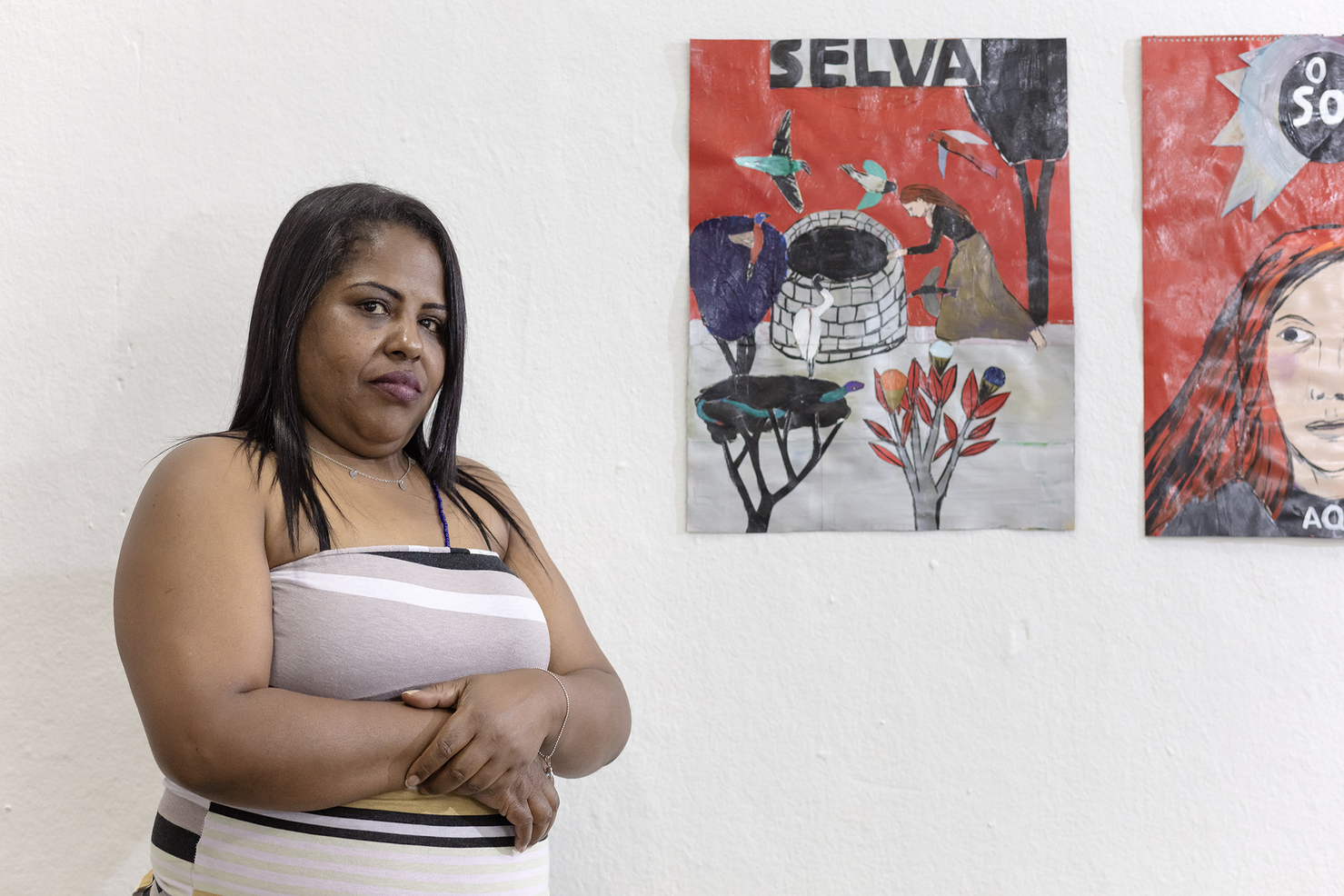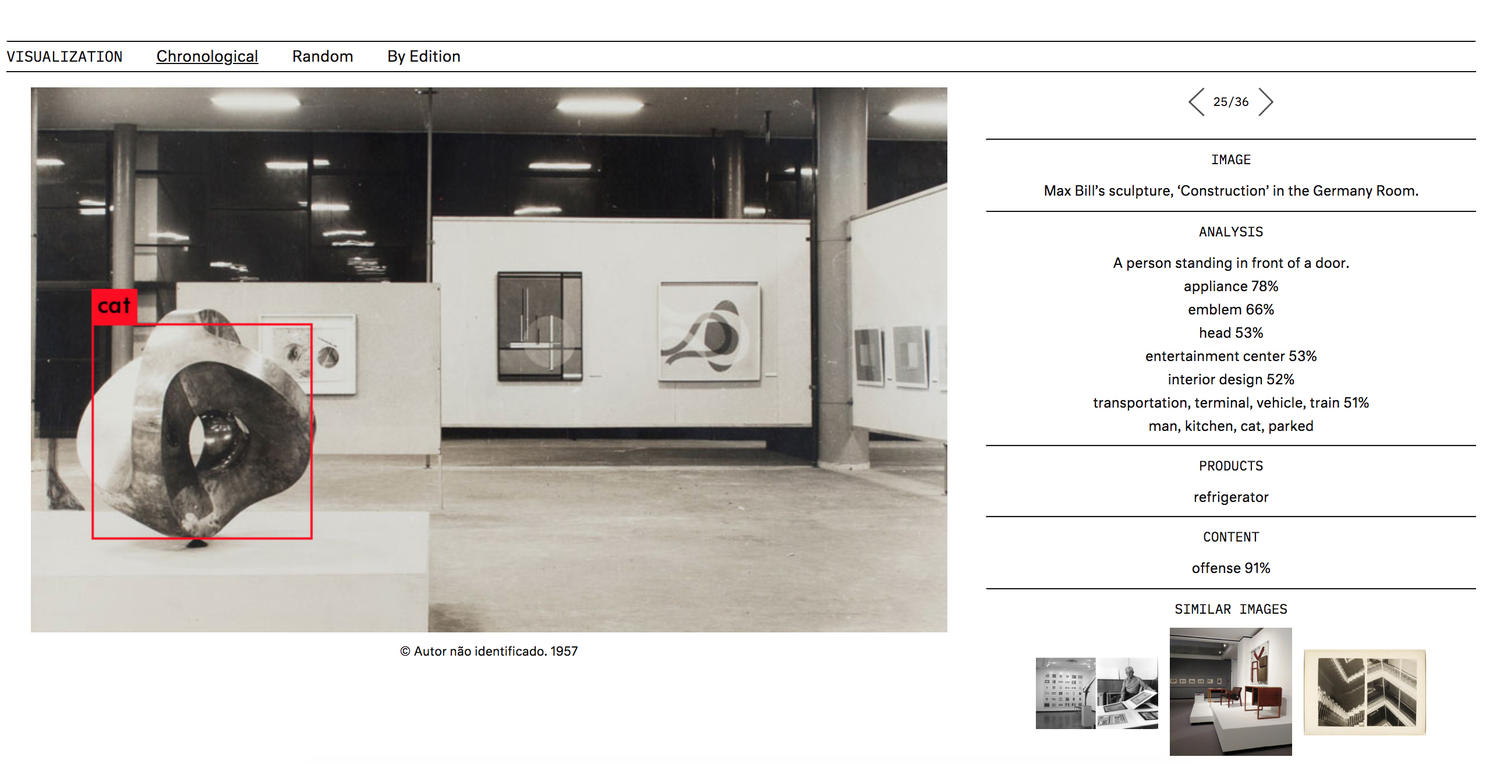As I hope to have shown in this study (which is only an excerpt from a broader doctoral thesis), the expository layer of a museum is only one of its many facets – and for many, like non-specialized visitors, it may not even be the main one. The museum is also a space of important intersections – between the formalism of official history and the dynamic practices of society; between a city and its inhabitants; between physical objects and an increasingly digital and virtual understanding of their reproductions and transformations.
Following this logic, the four years of research and intense work show yet another possible intersection between these spaces: the museum as anintermediation between Art (in the sense of already legitimized works) and artistic experiences (with the institution as a field of experience). In other words, the museum may also be an artist's studio or a discussion space for a more emancipated public. There is also a defense here that a museum is a complex organic system, as MCSHINE (1999) points out:
The fascinating thing about the relationship between artists and museums is that artists have studied every aspect of the museum, as if anatomizing an organism.
Perhaps this is the essential conclusion of the study – the reason for painting a new version of an already well-known historical painting; closing your eyes where they are expected to be open. A conclusion that sees that breaking away from the official discourse is capable of offering something much more important than any artwork or artifact inside the museum: the democratization of the art space. A democratization that is little formal, but very procedural and revealing.
These experiences are not only restricted to museums, but also seem relevant in other art spaces. I tested the expansion of some of these actions in the project Another 33rd São Paulo Biennial, commissioned by Fundação Bienal, which I carried out as one of the artists involved in the exhibition, which took place between September and December 2018.
Already in the first meetings with the chief curator Gabriel Perez-Barreiro, I demonstrated my interest in conducting an open research rather than a display of artistic objects in the exhibition space. This intention began to be formalized with a set of actions carried out before the opening of the Biennial and extended throughout the remainder of the exhibition. Together, they formed an inventory of possible interpretations of the exhibition, established through approaches that neither followed the proposed curatorial logic, nor the discursive strategies of Fundação Bienal. The actions involved the production of audio guides featuring the exhibition's cleaning and installation staff talking about their favorite works; an inventory of visitors' reactions to the exhibits; further analysis of the exhibition using Artificial Intelligence, etc. For more information visit: https://outra33.bienal.org.br/en/
References and Bibliography
Alexander, E. (1982). Museums in Motion. An introduction to History and Functions of Museums. Nashville: American Assoc. for State and Local History.
Agamben, G. (2007). Profanações. São Paulo: Boitempo.
Belting, H. (2009). Antropologia de la imagen. Buenos Aires: Katz.
Berger, J. (2008). Ways of seeing. Londres: Penguin.
Canclini, N. (2013). Culturas Híbridas - Estrategias para entrar e sair da modernidade. São Paulo: Edusp.
Chesneaux, J. (1962) Le mouvement ouvrier chinois de 1919 à 1927. Paris: Mouton.
Flusser, V. (2018). Filosofia da Caixa Preta: Ensaios Para uma Filosofia da Fotografia. São Paulo: É Realizações.
Freire, P. (1967). Educação como Prática da Liberdade. Rio de Janeiro: Paz e Terra.
Godfrey, M.; Biesenbach, K.; Greenberg, K. (2010). Francis Alÿs: A Story of Deception. New York: The Museum of Modern Art.
Guy, D. (1997). A sociedade do espetáculo. Rio de Janeiro: Contraponto.
Marx, K (2010). Economic & Philosophic Manuscripts of 1844. Avalaible at https://www.marxists.org.
McShine, K. (2002). The Museum as Muse: Artists Reflect. New York: The Museum of Modern Art.
Nabokov, V. (1990). Fogo Pálido. São Paulo: Círculo do Livro.
Paz, O. (2014). Marcel Duchamp ou o Castelo da Pureza. São Paulo: Perspectiva.
Ranciere, J. (2014). The Emancipated Spectator. New York: Verso.
Steyerl, H. (2009). In Defense of the Poor Image. E-flux Journal #10. Avalaible at https://www.e-flux.com/journal/10/61362/in-defense-of-the-poor-image/.
It is difficult to sum up this multifaceted research, carried out over the course of four years; and which, as seen above, also impacts other art projects carried out by me. Among the many layers explored, there was an attempt to bring new experiences to museums; until their pillars support less of the official structure that justifies them as government projects, and begin to harbor a space for open experiences for their own improvement and for building a society that is more emancipated, critical and free.
And, finally, that this experimental museum in fact becomes the world.
Audio guide: more voices. To achieve the pretense neutrality of the exhibition space, it is necessary to mask the countless workers involved in the setup and maintenance of an exhibition, which appears to have resulted exclusively from the creative work of the artists and, sometimes, the curator. Guards, wall painters, the setup team, janitors and maintenance staff are not allowed a place in the space they helped to create or preserve, reinforcing a sort of alienated/estranged work. Opposed to this erasing of an important part of the exhibition space, five tracks of the audio guide of the 33rd Biennial were reserved for the comments of some of these professionals – certainly the people who lived together the most with the works on display in the Biennial building. In the image, Rosângela Silveira (general cleaning assistant of the Biennial) comments on one of the paintings by the artist Vânia Mignone. © Filipe Berndt. More here.
Coup d’État. Manifestation in favor of Lula's freedom at the opening of the Biennial. The project Another 33rd Bienal de São Paulo catalogued various protests by artists and the public occured at São Paulo Biennial. © Ding Musa. More here.
Expansions via Artificial Intelligence. The different stages of the setup of the 33rd Bienal were recorded by filmmaker Ana Cris Lyra, based on various experiments in nontraditional filming. Edited by Luara Oliveira, the material is used to understand the cataloging operation of different computer vision systems. In the example to the side, we selected the specific moments that the Open Pose Artificial Intelligence identified human bodies where in reality there was not - an error that expands the notion of human presence in the space of art. These videos is also shown in the Biennial’s visitor storage locker area, an intermediate space between the outside and the inside of the exhibition. More here.
Decoded records: the official past. Old images from the official archive of the Fundação Bienal are here interpreted by a set of artificial intelligences. The aim is to analyze how the understanding of the past is transformed when read by contemporary tools for the reading of images. More here.


